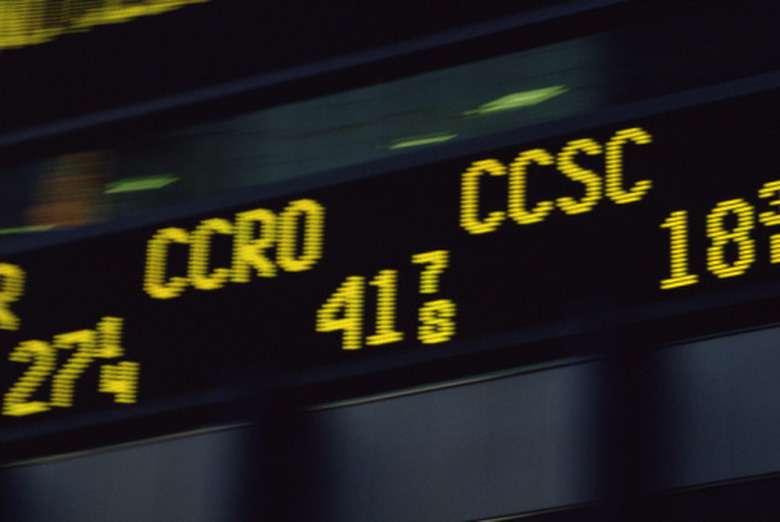What Are The Fundamental Differences & Similarities Between Fractions & Decimals?
Both fractions and decimals are used to express nonintegers, or partial numbers. Each one has its own common uses in science and math. Sometimes it's easier to use fractions, such as when you're dealing with time. Examples of this include the phrases "quarter past" and "half past." Other times, such as when dealing with money on a bank statement, it is easier to use decimals to show the calculations to the exact penny, or one-hundredth place.
Fractions
Fractions
Fractions are ratios of two numbers. Often, these numbers are each whole numbers, such as 1/2 or 3/4. Fractions, however, can also be used to express ratios of partial numbers. They are mostly used for portions that are easily broken apart. Fractions also represent a different way to describe division. For example, 3/4 can mean "three fourths" or "three divided by four."
Decimals
Decimals
Decimals are numbers that fall between integers and are described as digits following a decimal point. Decimals use a system of numbers based on units of tens, which results in the spaces past the decimal point as tenths, hundredths, thousandths and so on.
Similarities
Similarities
Fractions and decimals are similar because they both are ways to express partial numbers. Additionally, fractions can be expressed as decimals by performing the division of the ratio. (For example, 3/4 is equivalent to 3 divided by 4, or 0.75.) Decimals can also be expressed as fractions in terms of tenths, hundredths, thousandths and so on. (For example, 0.327 is equivalent to 327 thousandths, which is equivalent to 327/1,000.)
Differences
Differences
One main difference between fractions and decimals is that fractions tend to be simple expressions of ratios of whole numbers. They do not always divide into an easy-to-express decimal. For example, when divided, 1/3 becomes a repeating decimal of 0.33333 ... Fractions are also easily converted into their reciprocal, the number it can be multiplied with to make 1, by simply inverting the fraction. For example, the reciprocal of 2/5 is 5/2. Conversely, decimals can be used to describe long, complex and potentially infinite numbers, such as the value of pi. They are also useful in describing partial numbers when a whole-number ratio is not available to make a fraction.
Conversion
Conversion
To convert a fraction into a decimal, simply divide the top number by the bottom one. If there's a number before the fraction, add that to your final answer. For example 4 1/5 is equal to 4.2. To convert a decimal to a fraction, start by writing out any digits before the decimal point. Then write all the digits following the decimal point as the numerator and a 1 followed by as many zeroes as there are spaces behind the decimal point. Finally, reduce the fraction if possible. For example, 3.44231 is equal to 3 44,231/100,000.
Cite This Article
MLA
Carr, Kevin. "What Are The Fundamental Differences & Similarities Between Fractions & Decimals?" sciencing.com, https://www.sciencing.com/fundamental-similarities-between-fractions-decimals-8510600/. 24 April 2017.
APA
Carr, Kevin. (2017, April 24). What Are The Fundamental Differences & Similarities Between Fractions & Decimals?. sciencing.com. Retrieved from https://www.sciencing.com/fundamental-similarities-between-fractions-decimals-8510600/
Chicago
Carr, Kevin. What Are The Fundamental Differences & Similarities Between Fractions & Decimals? last modified March 24, 2022. https://www.sciencing.com/fundamental-similarities-between-fractions-decimals-8510600/
